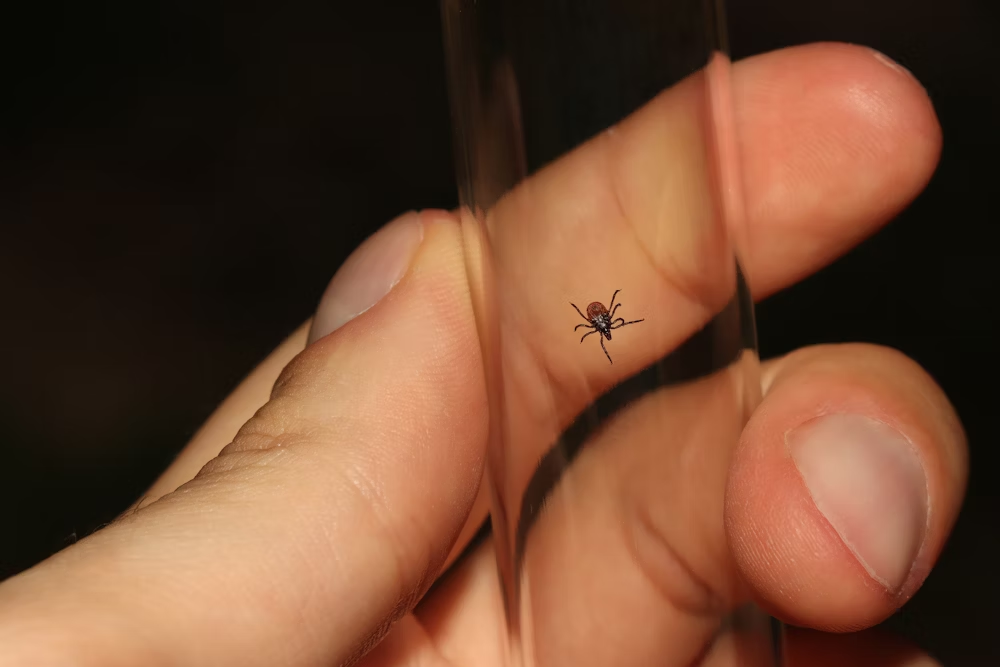
photo source: Unsplash
Ticks are tiny creatures, but their impact on human health can be significant. These blood-sucking parasites can transmit various diseases, making it crucial to identify areas where the risk of exposure is high. Protecting yourself from tick-borne illnesses starts with understanding where ticks thrive.
In this article, we will explore the concept of tick hotspots and provide insights into identifying high-risk areas for tick exposure. We’ll delve into preventive measures and community efforts to raise awareness and mitigate the risks associated with these pesky parasites.
KEY TAKEAWAYS
- Tick hotspots have high tick concentrations due to hosts, climate, and undisturbed habitats.
- High-risk areas include hiking trails, forests, parks with tall grass, and campsites.
- Prevention involves light clothing, repellents, and thorough tick checks.
- Community reporting, education, and habitat management help mitigate risks.
Understanding Ticks and their Habitats
Ticks are small, parasitic arachnids that feed on the blood of humans, animals, and birds. Their life cycle involves four distinct stages: egg, larva, nymph, and adult. Different tick species thrive in various regions, each with unique preferences for their habitats.
Ticks tend to flourish in environments that provide them with suitable conditions for survival and reproduction. These include humid and wooded areas, areas with high grass or leaf litter, and transition zones between woods and open spaces.
Ticks require a certain level of moisture and humidity to prevent desiccation, making these environments ideal for their survival. In areas where ticks pose a significant risk, professional tick control services may be employed to manage their populations and reduce the chances of encountering them.
Identifying Tick Hotspots
A tick hotspot is an area where the concentration of ticks is significantly higher than in surrounding regions. Several factors contribute to the formation of these hotspots, including the presence of suitable host animals, favorable climatic conditions, and undisturbed natural areas.
Ticks rely on host animals, such as deer, mice, and birds, for their blood meals, and transportation. Areas with high populations of these hosts are more likely to become tick-infested. Also, they thrive in regions with moderate temperatures and high humidity, as these conditions support their survival and development.
High-Risk Areas for Tick Exposure
While ticks can be found in many outdoor settings, certain areas pose a higher risk for tick encounters. Hiking trails and forested areas are prime locations for ticks, as they provide the ideal habitat with ample vegetation, moisture, and potential host animals.
Parks and recreational areas, particularly those with tall grasses or wooded areas, can also harbor significant tick populations. Camping sites and campgrounds are another potential hotspot, as campers may inadvertently transport ticks from other regions or disturb existing tick habitats.
Preventive Measures in Tick Hotspots
Let’s also not forget that it’s crucial to take preventive measures to reduce the risk of tick bites and potential disease transmission. One of the most effective strategies is to wear light-colored clothing, which makes it easier to spot and remove ticks before they attach.
Using EPA-approved insect repellents containing ingredients like DEET or picaridin can also help deter ticks from latching onto your skin. After spending time in tick-infested areas, it’s essential to perform thorough tick checks and promptly remove any attached ticks using proper removal techniques.
Community Efforts and Awareness
At the end of the day, keep in mind that identifying and managing tick hotspots is a collective effort that requires community involvement. Reporting tick sightings and cases of tick-borne illnesses to local authorities and healthcare professionals can help pinpoint areas of concern and facilitate targeted prevention efforts.
Collaboration between local governments, environmental organizations, and public health agencies is crucial in raising awareness and implementing effective strategies. Public education campaigns can empower individuals with knowledge about ticks, preventive measures, and the importance of vigilance.
Additionally, habitat management strategies, such as vegetation control and deer population management, can help reduce the number of ticks and potential host animals in high-risk areas. By working together, communities can take proactive steps to mitigate the risks associated with these little pesky ticks.
Closing Thoughts
Identifying and avoiding tick hotspots is a crucial step in protecting ourselves and our loved ones from the potential health risks associated with tick-borne diseases. By understanding where ticks thrive, taking preventive measures, and fostering community awareness and collaboration, we can effectively reduce the chances of encountering these pesky parasites and maintain a tick-free environment.





